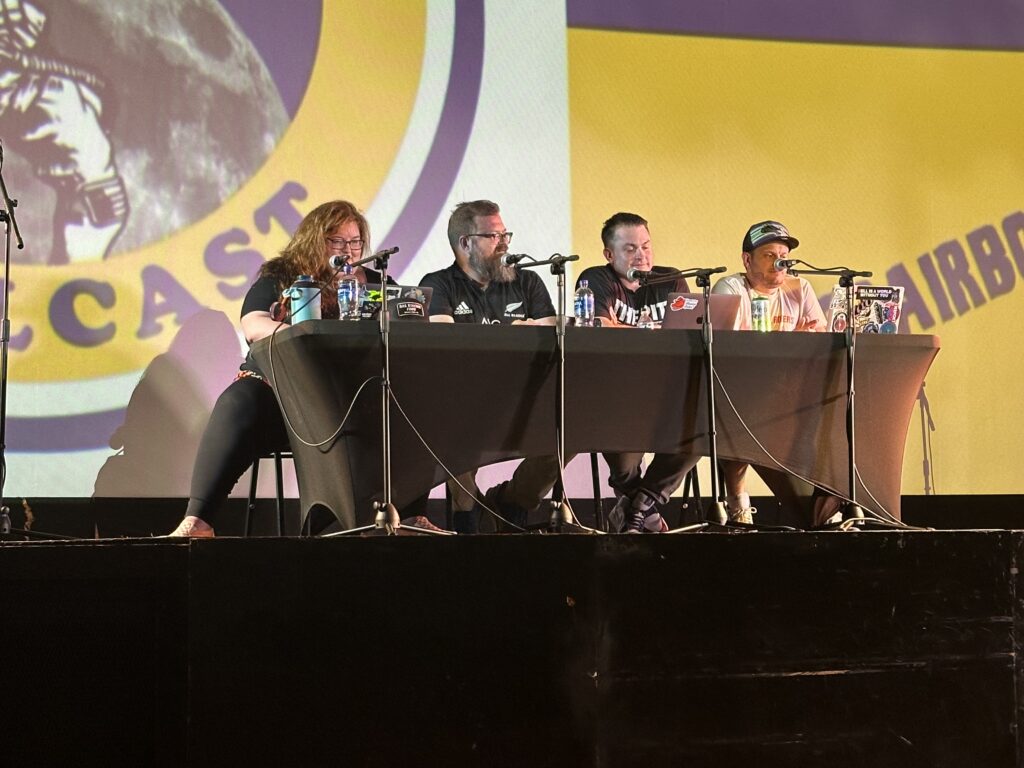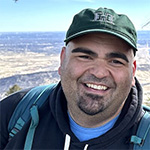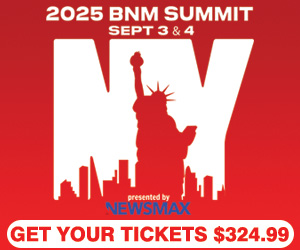I used to write a lot about what the sports media could learn from totally unrelated entities. I wrote about bands, businesses and major events.
You won’t read any more of those columns from me. I look back on them and see a bunch of LinkedIn posts – truly basic information that is largely not teaching anyone anything. It masquerades as insight because I set something totally unrelated to the business as the background. I didn’t really get that until I stopped thinking about the media business all day, every day.
Around a year ago, I stepped away from the editor’s role here at Barrett Media to pursue a business opportunity locally in Raleigh, NC where I live. I’m creating premium content and events in conjunction with Joe Ovies’s and Joe Giglio’s OG Triangle Media. Maybe you have seen me post about The Sports Podcast Festival, our first major undertaking.

I put three shows together on one stage at The Rialto, an historic theater in Raleigh. No matter what metric you are using to measure, the event was a huge success – the marketing worked, the venue was full, and we were profitable in year one. That doesn’t always happen the first time out of the gate when you are trying to establish a new tradition!
How did it happen and what can radio learn? This isn’t me trying to build a tenuous connection from the latest Netflix hit to our business. This is an event that you could literally copy and paste pieces of to work for you so long as you have the appropriate talent and audience.
Radio needs to think big more often when it comes to events! I started my on-air career in 1997. It was the heyday of concert festivals and big events in the business. Whether it was the KROQ Weenie Roast or a Jim Rome tour stop, radio sought to create memories for listeners. It was a time when the industry understood that creating lifelong loyalty required creativity.
That’s what was at the heart of the Sports Podcast Festival. This all started because Joe Ovies and Joe Giglio were approached about doing a live show at The Rialto, and we didn’t think it made sense.
I wanted to make a memory for those listeners. I looked at it like paying college football players: Just because we don’t immediately have the perfect idea doesn’t mean it’s impossible. Rather than say no, I started talking to everyone – Ovies, Giglio, the theater owner, literally anyone whose opinion I valued – about what was needed to make saying yes make sense.
Here’s what I immediately knew:
- The Rialto seats 450 people. Ovies & Giglio probably cannot convince that many people to pay enough money to justify our efforts without some help.
- If we were going to do this, we needed to do it in football season, when we see an uptick in audience.
Number one is what got me thinking about a multi-show festival. Number two is what helped me decide on the right shows. Along with The Shutdown Fullcast and Hand in the Dirt, I thought Ovies & Giglio could find the right cross-section of people that would think of our event as a can’t-miss, once-in-a-lifetime event. We worked out contracts, travel plans, and paychecks with our guest shows, an order that worked for everyone’s ego and plans, and voila – the first annual Sports Podcast Festival was born!
Just because my world is focused on digital audio now does not mean that I don’t value radio. I am still a radio guy at heart, and I want to see that industry succeed. Creativity and spectacle are what made me want to be in the business in the first place.
So what lessons can I give you from this event? I thought of four.
INVEST!
The saying “you gotta spend money to make money” is true. It’s been true for a long time, and yet too often companies say no to any idea that forces them to spend a penny.
I approached The Sports Podcast Festival with a piece of advice I got from my friend Dave Rose at Deep South Entertainment – if you are trying to launch a tradition, you have to commit to at least three years. You don’t even know if what you are doing is worth continuing until then.
A great idea could lose money if it’s only done once. It’s just like getting any advertising message to an audience. Repetition inspires action. There will always be early adopters, but testimonials are more persuasive than ideas that sound cool.
I’ll be as transparent with you as I can. We netted over $15,000. That’s pretty damn good for year one. But to get there, we invested around $25,000.
It costs money to get out of town performers to a show. If we had staged a podcast festival of only local shows, the potential audience pool would have been much smaller. Not only would we have sold probably half the amount of tickets that we did, but we would have had to spend more just to let people know the event was happening.
That brings me to lesson number two.
EMBRACE CROSSOVER
Ovies & Giglio is a sports show with a lot of interests. It’s not just about the games. The show is about the culture of sports and what they mean to fans in North Carolina.
If we were going to build a festival, we couldn’t invite someone like Adam Schefter or Ryen Russillo. Their approach to sports is not ours. There may be crossover audience, but it isn’t significant and for an event like this, it’s probably not meaningful.
Now, The Shutdown Fullcast on the other hand, is a perfect fit. It’s a college football show that is anything but serious. There was never a doubt in my mind that if you listened to my guys, you probably listened to The Fullcast or at the very least, if you gave it a chance, you would probably like it.

Hand in the Dirt was a different type of crossover. First, most HitD listeners are also Shutdown Fullcast listeners. Second, HitD host Michael Felder is a North Carolina guy. Ovies & Giglio have talked to him for years. It may have been the smallest show of the three, but HitD was the bridge. It was what created that cross-section of audience that would see The Sports Podcast Festival as a can’t-miss, once-in-a-lifetime event.
Not only did I have the size of those shows’ audience to work with, I also had their megaphone. There is no type of advertising that I could buy that was as useful or as powerful as just having those hosts saying that they were going to be part of this event.
Radio should embrace podcasts for live events. What is wrong with sharing a stage with another personality that’s popular with your audience and could bring along some people that wouldn’t have been interested otherwise?
FIND SPONSORS THAT EXCITE YOUR AUDIENCE TOO
The Sports Podcast Festival would have been impossible to pull off without the two companies that threw their weight behind us – Breeze Thru and Homefield Apparel.
Breeze Thru was a great partner, who is based here in North Carolina. Having it as our title sponsor hammered home the local nature of this event. If the show were The Sports Podcast Festival presented by Circle K, it would feel faceless. It doesn’t give the audience the impression that we are an underdog worth supporting. I would venture a guess that Circle K also wouldn’t have put signage up in all of its stores to promote the show.
Adam Stephenson, who runs Breeze Thru, is also a fan of both Ovies & Giglio and The Shutdown Fullcast. It made him a valuable resource to bounce ideas off of when I was planning the show.
Homefield is a cult brand. Bringing them on board as a sponsor was a strategic move. I have written about their relationship with the podcast audiences they advertise to before.
The company makes incredibly comfortable hoodies and has built its brand on vintage college logos. I knew if we could get them to create a hoodie that you could only buy at our show, it would motivate some people to be there.

Joshua Johns, the marketing executive that I worked with, was skeptical that a hoodie would sell in the South in the middle of August, but the deal we worked out added an additional $6,000 in revenue. He admitted that maybe I was onto something leaning into the Homefield cult.
DELIVER WHAT THE AUDIENCE LOVES ABOUT YOU
Here’s what I know about Ovies & Giglio. Even a year after being let go by 99.9 The Fan and Capitol Broadcasting, they are still the most valued sports voices in the market. They are connected to the people, teams and history in a way that you just can’t be if you don’t have their history. It’s why they found success so quickly with both listeners and advertisers after launching their podcast.
They delivered a very local show. Sure, plenty of people in the audience were there because of the Shutdown Fullcast. I met people from as far away as Albany, Baltimore and Atlanta, but the majority of attendees were from Raleigh, Durham and the surrounding suburbs.
The Fullcast was pure chaos loosely tied to college football. That’s what their audience wants. Hand in the Dirt let Michael Felder just act like his weird ass self. That’s what their audience wants.
At the end of the event, none of these shows overthought what they were there to do. They did what they did best and invited the audience to be a part of it and interact with them on and off stage.
Live broadcasts will always be part of the radio model for events. They are a great source of ad revenue, and that’s never been more important than it is in 2024.
But why not think bigger?
Investing the time, money and resources into creating ticketed live events can open up a whole new revenue stream. Sure, they require investment, but if you are committed to creating something great, they can pay dividends for years to come.
Speaking of which, mark your calendars for August 23 next year. I’d love to see you all in Raleigh for the second Sports Podcast Festival!

Demetri Ravanos is a columnist and features writer for Barrett Media. He is also the creator of The Sports Podcast Festival, and a previous host on the Chewing Clock and Media Noise podcasts. He occasionally fills in on stations across the Carolinas in addition to hosting Panthers and College Football podcasts. His radio resume includes stops at WAVH and WZEW in Mobile, AL, WBPT in Birmingham, AL and WBBB, WPTK and WDNC in Raleigh, NC.
You can find him on Twitter @DemetriRavanos or reach him by email at DemetriTheGreek@gmail.com.



